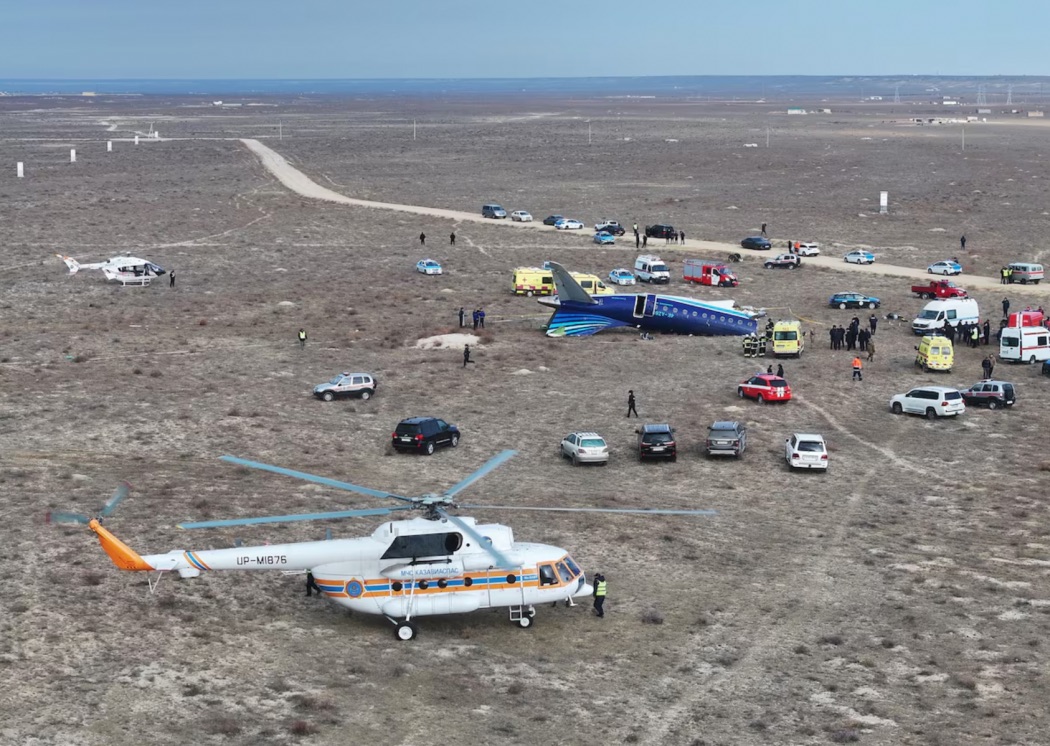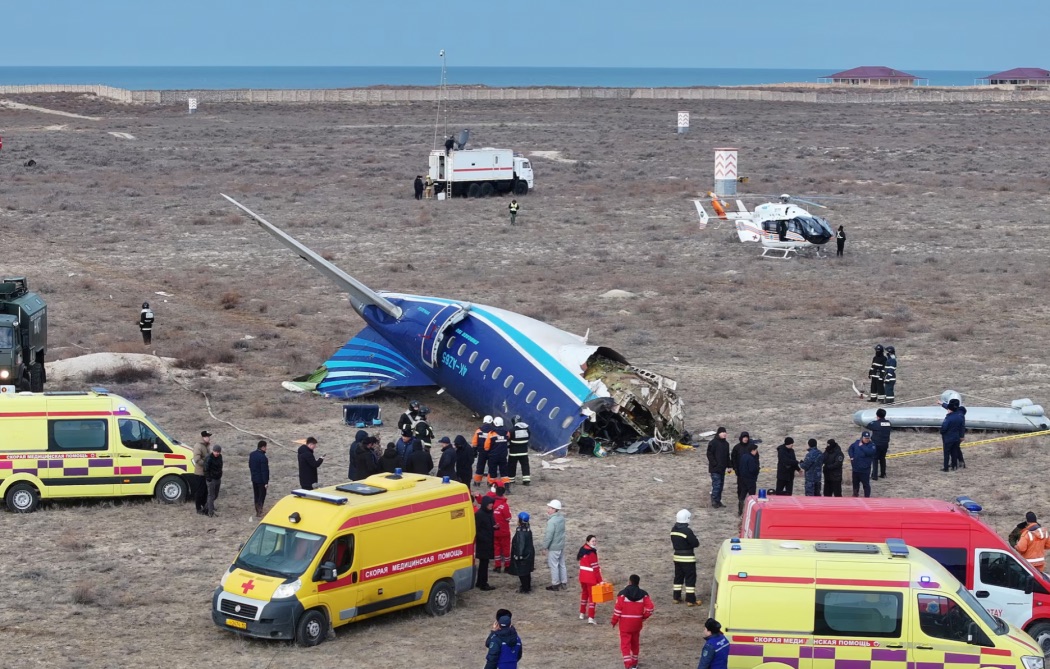BAKU, Kazakhstan — An Azerbaijan Airlines passenger plane that crashed near Aktau, Kazakhstan, killing 38 people, was likely brought down by a Russian air defence system, according to preliminary findings from Azerbaijan’s investigation.
The crash occurred on Wednesday, December 25, 2024, after the aircraft veered off its original route and crossed the Caspian Sea.
The Incident
Flight J2-8243, an Embraer jet, was en route from Baku, Azerbaijan, to Grozny, Russia, when it experienced an emergency and diverted across the Caspian Sea.
The aircraft crashed in Kazakhstan in a fiery explosion, leaving only 29 survivors.
Video footage taken by passengers before the crash showed oxygen masks deployed, passengers wearing life vests, and signs of distress onboard.
Kazakhstan’s transport authorities reported that the plane’s final moments included GPS jamming and a communication blackout, consistent with electronic warfare disruptions.
Shrapnel damage observed on the tail section of the wreckage has further pointed to the possibility of anti-aircraft fire.
Russian Air Defence Involvement
Sources within Azerbaijan’s investigation told Reuters that the aircraft was struck by a Russian Pantsir-S air defence system.
According to the findings, the plane’s communications were disabled by advanced electronic warfare systems over southern Russia, an area frequently targeted by Ukrainian drone strikes.
“No one claims that it was done on purpose. However, taking into account the established facts, Baku expects the Russian side to confess to the shooting down of the Azerbaijani aircraft,” an Azerbaijani official said.
The Russian Defence Ministry has not commented on the allegations.

International Reactions
A U.S. official, speaking on condition of anonymity, stated that early evidence supports the theory that a Russian air defence system struck the plane.
Canada’s foreign ministry expressed “deep concern” and called for an open investigation.
“We call on Russia to allow for an open and transparent investigation into the incident and to accept its findings,” Canada said in a statement on X (formerly Twitter).
Kremlin Response
Kremlin spokesperson Dmitry Peskov declined to comment on the allegations, stating, “It is wrong to build hypotheses before the conclusions of the investigation.”
Kazakh Deputy Prime Minister Qanat Bozymbaev similarly refrained from confirming or denying the involvement of Russian air defences.

Wreckage and Evidence
Images of the crash site show shrapnel damage to the plane’s tail, consistent with anti-aircraft munitions.
Aviation security firm Osprey Flight Solutions noted in an alert that GPS disruptions and the circumstances surrounding airspace in southwestern Russia indicate a high likelihood of anti-aircraft fire involvement.
Russia’s southern regions have experienced repeated Ukrainian drone attacks, prompting Moscow to deploy air defence systems extensively.
On the day of the crash, Russia reported downing 59 Ukrainian drones, with some activity affecting closed airspace near the Caspian Sea.

The Path Forward
The investigation is ongoing, with calls for transparency growing amid the geopolitical tension surrounding the crash.
The incident highlights the dangers posed by the intersection of civilian aviation and military conflict, especially in areas with high levels of electronic warfare and air defence activity.
Azerbaijan and international aviation authorities are expected to push for a detailed inquiry to determine the exact sequence of events leading to the tragic loss of life.







